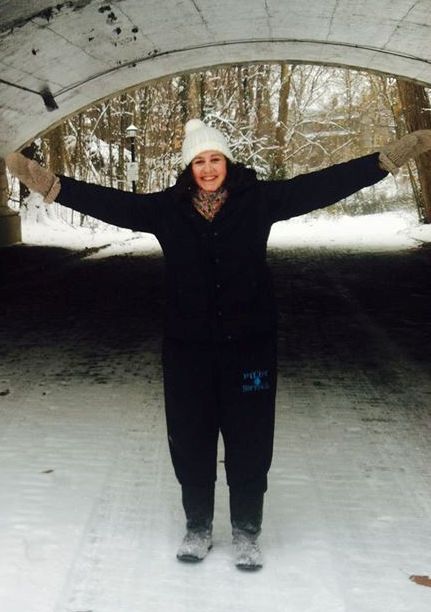 al lab methods class with Deanna Grimstead this spring, and I was given the opportunity to blog about my experiences in the class as well as my experiences documenting and analyzing an assemblage from a site in Proctorville, Ohio. Although my track in anthropology focuses on forensic and physical anthropology, I wanted to take this class because I enjoyed my archaeology classes in the past, and I like the laboratory aspect-putting my knowledge into practice. I also like to think that archaeology and its practice can translate not only to other sub-fields within anthropology, but to completely other disciplines as well. For example, I will be attending law school part time at Capital University here in Columbus next fall, and a lot of people ask me how the classes I take can prepare me for this. I like to tell them that its kind of like archaeology. When we got our assemblages at the beginning of semester, I was kind of intimidated by the sheer amount of information I knew I would be sorting through, some of it important and some of it not. But my professor explained that it is our job to make sense of this huge amount of data and draw out some conclusions from this data. This, I think, is kind of what a lawyer does as well. They are presented with a big amount of data (in this case evidence) and its their job to figure out what is important and draw conclusions from that. This is why I like archaeology and Ive chosen anthropology as my major in college. The first few weeks of class we spend learning about the laboratory methods we would be using on our assemblages, and the questions we can ask of each subset of the assemblage. We started by doing analysis on the faunal remains in each of our assemblages. I had some difficulty trying to figure out how to accession the remains because each persons way of organizing can be different. I learned through this that it is helpful to include as much information as possible because its better to have more than less. It took me awhile to work through my faunal remains because I had a lot. I sorted the remains into identifiable and unidentifiable pieces, and I was even able to identify a few of the remains! Like I mentioned earlier, most of the classes I take are about human skeletal remains, but it is remarkable how similar some features are among species. The ones I had the most trouble identifying were the fish bones-those ones are weird! Up next we are working on lithic analysis. I also have a lot of lithics in my assemblage and Im intrigued by them. After our lecture on the basics of lithic analysis I discovered I had a few fire treated lithics in one of my bags-so colorful! I am excited to see what I can discern from these items.
al lab methods class with Deanna Grimstead this spring, and I was given the opportunity to blog about my experiences in the class as well as my experiences documenting and analyzing an assemblage from a site in Proctorville, Ohio. Although my track in anthropology focuses on forensic and physical anthropology, I wanted to take this class because I enjoyed my archaeology classes in the past, and I like the laboratory aspect-putting my knowledge into practice. I also like to think that archaeology and its practice can translate not only to other sub-fields within anthropology, but to completely other disciplines as well. For example, I will be attending law school part time at Capital University here in Columbus next fall, and a lot of people ask me how the classes I take can prepare me for this. I like to tell them that its kind of like archaeology. When we got our assemblages at the beginning of semester, I was kind of intimidated by the sheer amount of information I knew I would be sorting through, some of it important and some of it not. But my professor explained that it is our job to make sense of this huge amount of data and draw out some conclusions from this data. This, I think, is kind of what a lawyer does as well. They are presented with a big amount of data (in this case evidence) and its their job to figure out what is important and draw conclusions from that. This is why I like archaeology and Ive chosen anthropology as my major in college. The first few weeks of class we spend learning about the laboratory methods we would be using on our assemblages, and the questions we can ask of each subset of the assemblage. We started by doing analysis on the faunal remains in each of our assemblages. I had some difficulty trying to figure out how to accession the remains because each persons way of organizing can be different. I learned through this that it is helpful to include as much information as possible because its better to have more than less. It took me awhile to work through my faunal remains because I had a lot. I sorted the remains into identifiable and unidentifiable pieces, and I was even able to identify a few of the remains! Like I mentioned earlier, most of the classes I take are about human skeletal remains, but it is remarkable how similar some features are among species. The ones I had the most trouble identifying were the fish bones-those ones are weird! Up next we are working on lithic analysis. I also have a lot of lithics in my assemblage and Im intrigued by them. After our lecture on the basics of lithic analysis I discovered I had a few fire treated lithics in one of my bags-so colorful! I am excited to see what I can discern from these items.